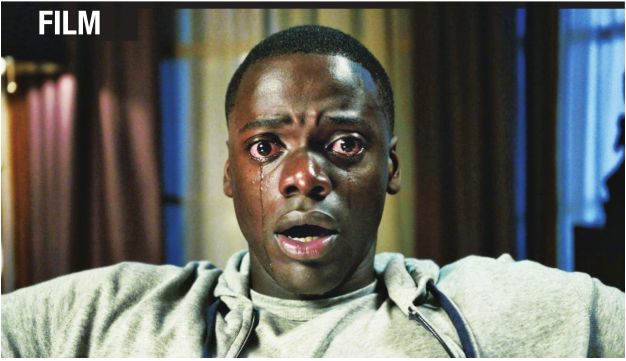
There’s a sense of unease that sets in early on in Jordan Peele’s Get Out, and as well made as this acerbic, entertaining hybrid is, this may be its most significant accomplishment. Our protagonist, a young African-American photographer by the name of Chris Washington, is meeting his girlfriend Rose’s (Allison Williams) parents in their posh suburban home. The folks, Dean and Missy (Bradley Whitford and Catherine Keener), try a bit too hard to make him feel welcome, hug a bit too long in greeting him, and their very white friends do the same. The fact that the young couple hit and killed a deer on their way to the home and Chris has been told offhandedly that the basement of the house has been sealed due to infestation of black mold underscore in their own way that something’s not … quite … right.
Creating and sustaining the correct tone is vital to the success of any movie, thrillers especially, of which this is a very good one. Not only is a sense of dread present throughout, our identification with Chris is almost immediate as we come to share in his uncomfortable situation. However, Peele goes the extra step and is able to inject comic undertones as well throughout, making this examination of race no less powerful but a bit more palatable for audiences who might only be expecting chills and thrills from the firsttime filmmaker.
This is a slow-burn movie, much like the work of M. Night Shyamalan, particularly The Visit. One seemingly inconsequential act builds upon another again and again, culminating in a big reveal that, while not completely original, proves successful nonetheless. Credit the cast for selling these moments, as the supporting performers consist of a great many familiar faces. Of particular note is a sequence in which Missy hypnotizes Chris against his will, a scene that allows the actress to display a heretofore unseen sense of menace and the young actor to serve notice that he’s a talent worth watching, what with the range of emotions he’s required to express, which he does with great skill.
Once the other shoe finally drops, it’s not so much a surprise but a worthy turn of events that’s worth the wait. It’s outlandish, to be sure, and not for the squeamish, but it plays perfectly into the protagonist’s and our sense of paranoia. Peele errs in requiring us to take two great leaps of faith where his plot is concerned that are a bit hard to swallow, yet you’re able to forgive them thanks to the speed with which they’re dispensed and all the goodwill Peele has engendered in the viewer until then.
While race is at the forefront of the film, Peele wisely doesn’t beat us over the head with the subject but rather acknowledges the tension it creates and examines its ramifications. The presence of two African- American housekeepers and their docile nature suggests a servant/slave relationship between them and their employers while the comedic act from Lil Rel Howery, very funny as Chris’ concerned best friend, comes dangerously close to being a stereotype in regards to his reaction to the suspicious events he stumbles upon.
However, Peele’s skill as a writer comes in giving them as well as every character in the film many layers, effectively reminding us that there’s much more than meets the eye when it comes to the people we meet and the environment we find them in. While this might seem an obvious lesson and one that’s been mentioned ad nauseum, unfortunately some still haven’t gotten the message. Peele’s exasperation regarding this issue is obvious, but at least he’s channeled this towards the making of a timely and effective movie.
Contact Chuck Koplinski at [email protected].
For a review of Collide, go to the Cinemascoping blog at http://illinoistimes.com.